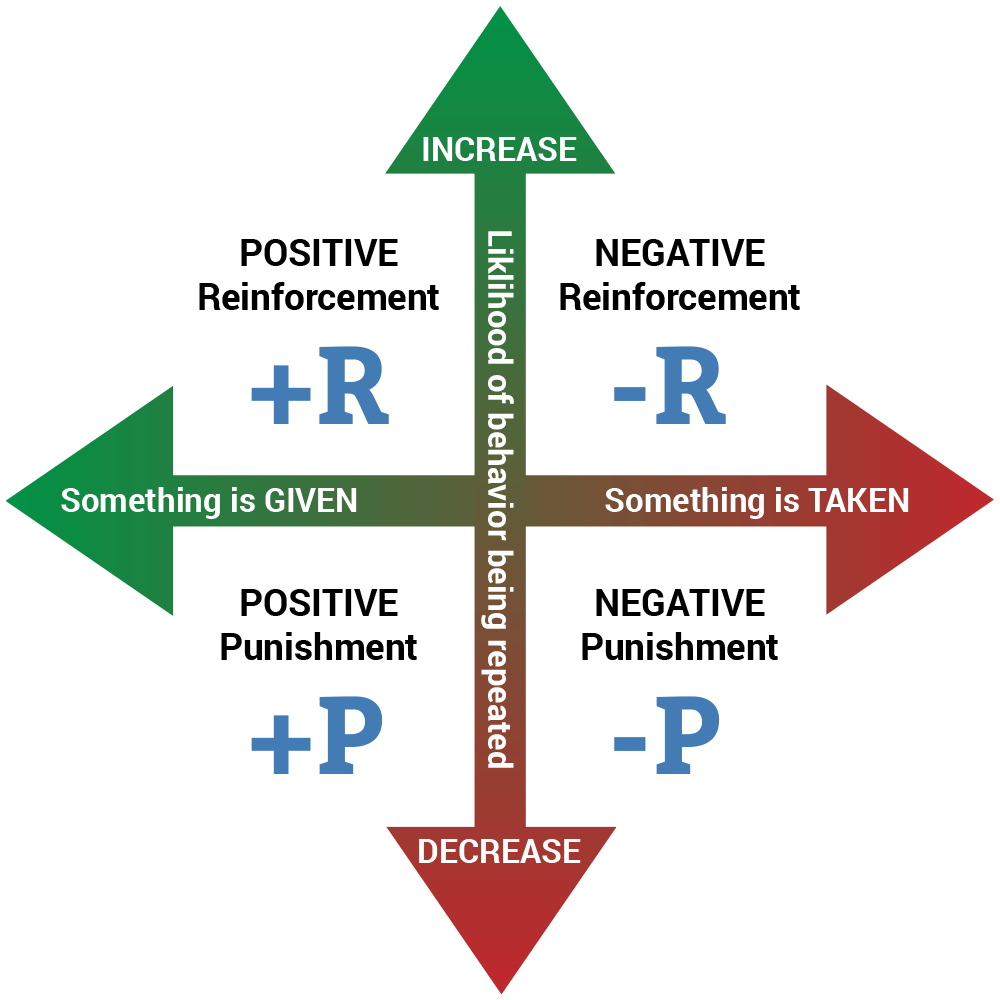There are many terms that describe a trainers’ methodology that can be confusing to dog owners. Here is a little break down:
- PP, Fear Free: uses only positive reinforcement/negative punishment. Adds or removes reinforcers to increase or decrease behaviors and manages behaviors that aren’t able to be fixed with food.
- LIMA: Least intrusive/Minimally Aversive. Allows for punishment
- Balanced: a loose term describing trainers who use all 4 quadrants, but in no way are all balanced trainers created equal.
What does all of this mean?
There are four quadrants of learning theory: positive reinforcement, negative reinforcement, positive punishment, negative punishment: or other words: cause and effect. The animal does the behavior based on previous history of that behavior and there is NO judgment between the quadrants. Mixed academic research, professional organization statements, lack of information, previous history with a method and personal bias, can all affect how a trainer decides the path they want to take. The bottom line is that bad training is bad training, regardless of the method a trainer chooses. It may result in a dog that still cannot be integrated into a household or one that is existing without fulfillment.

Aside from the science part of teaching skills, there is another equally important factor to consider – relationship. This is the combination of everything: leadership (how your dog lives with you), structure (the clock your dog lives by), fairness, clarity, and fulfillment (play & the activities or downtime you spend with your dog). From time to time, relationships can get cloudy… communication gets muddy. Leadership roles get reversed, structure gets forgotten, no enjoyment. Sometimes it can happen with only one family member, and sometimes with everyone in the household. Either way, when things fall apart it can create stress and anxiety between people and dogs which causes conflict.
When a dog and human start a relationship or hit a bump in the road in an existing one, it is important to examine the relationship from all angles (skills, leadership, structure, fulfillment) and not get caught in a belief that there is only one way to train or solve a problem (especially if that way is not producing good results).
Over the past few years, a wonderful shift has happened and a new breed of trainer has evolved. “Positive First” was coined by Australian trainer Glenn Cooke, of the Canine Paradigm podcast which describes trainers who start with and use positive reinforcement (food or play) as the preferred method so long as it remains effective, then adding negative reinforcement (such as leash or e-collar pressure) to create clarity, with correction (punishment) used only when necessary for ignoring known commands. As an industry, “Positive First” trainers have expanded our knowledge base and are making great strides in helping many dogs and people that ‘purely positive’ or ‘punishment’ training has failed. We believe through fair progressive training techniques that most dogs can be integrated into our lives, without medication, rather than euthanized due to unwanted behaviors.
Trainers who used compulsory or punishment style training are learning the value of positive reinforcement. Trainers who only used positive reinforcement are learning how to use other tools like electronic collars or just leash pressure to bring clarity that most dogs need, to live in our human world.
Truth be told: it has been the extreme trainers on both sides of purely positive and punishment based training who have brought this great shift of “Positive First” to the industry. We are proud to be Positive First trainers. Training dogs is more than rewards and corrections. What we bring is a high level of expertise, professionalism, common sense & skill in training and behavior to help people have a better relationship with their dogs and have dogs that are living lives with enrichment and fulfillment, being a dog!!!